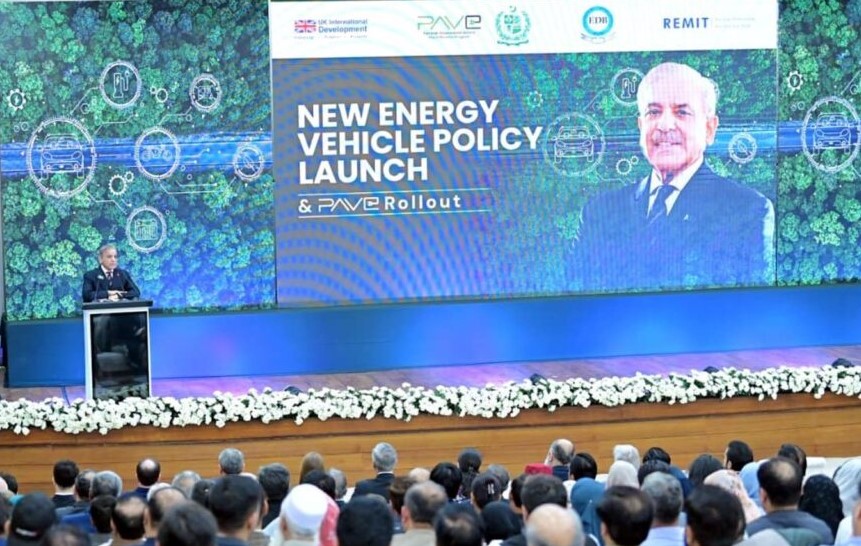Pakistan’s New EV Policy 2025-30: What You Need to Know

Pakistan’s New EV Policy 2025-30: What You Need to Know
The Federal Government, in collaboration with the Ministry of Industries and Production, has officially launched the Pakistan Electric Vehicle Policy 2025, also known as the New Energy Vehicle Policy Pakistan. This policy covers both 2-wheelers and 4-wheelers, aiming to accelerate the shift from fuel-based vehicles to electric mobility.
According to an IPRI (Islamabad Policy Research Institute) brief, the plan focuses on building nationwide charging stations, testing battery swapping technology, and increasing public awareness. To support the Pakistan Electric Vehicle Market, the government has promised subsidies, tax incentives, and reduced import duties, while also encouraging local industry growth through public–private partnerships.
Goals of the Pakistan EV Policy 2025-30
The Pakistan EV Policy 2025-30 sets out clear milestones:
- By 2030, at least 30% of new vehicles should be electric.
- By 2040, the target is 90% electrification.
- By 2060, the country aims for a complete transition to EVs.
The primary goals are to cut down urban pollution, reduce reliance on imported oil, and establish a robust green-tech industry within Pakistan. This roadmap is central to the Future of Electric Vehicles Pakistan.
Economic and Social Impact
If implemented successfully, the plan could save Pakistan up to $64 billion in oil imports by 2060. These savings could instead fuel new opportunities in EV assembly, battery production, and charging infrastructure.
For the average citizen, the benefits are equally important: less smog in cities, cleaner air for families, and lower running costs by eliminating fuel expenses. The vision of Electric Cars in Pakistan 2025 goes beyond transportation—it’s about improving public health and reducing household costs.
The Pakistan EV Roadmap 2025-30 – Three Stages
The Pakistan EV Roadmap 2025-30 outlines a phased approach:
- 2025–2030: Establish charging networks, pilot battery swapping, and spread awareness.
- 2030–2035: Expand local EV manufacturing and increase adoption in both cities and rural areas.
- 2035–2040: Make EVs affordable and accessible for the masses.
This structured plan reflects the Electric Vehicle Plans Pakistan vision for long-term growth.
Incentives for Consumers and Industry
To encourage adoption, the Government EV Policy Pakistan offers:
- Subsidies on electric vehicles.
- Tax reductions and exemptions.
- Lower import duties for EV components.
- Nationwide charging networks under public–private partnerships.
The challenge, however, lies in ensuring these incentives reach everyday buyers rather than being limited to large corporations.
Technology and AI in the EV Policy
The Pakistan Auto Industry EV 2025 plan also emphasizes the role of AI and machine learning in predicting demand, identifying optimal charging station locations, and evaluating the effectiveness of government incentives. This data-driven approach ensures smart investments and transparent results.
Looking Ahead
On paper, the New Energy Vehicle Policy Pakistan offers a bold path to a cleaner economy, new employment opportunities, and reduced oil dependence. However, challenges remain—such as infrastructure development, affordability, and consumer acceptance.
The ultimate test will be whether Pakistan can deliver on these promises and convince the average buyer that electric mobility is the smarter choice. If successful, the Pakistan Electric Vehicle Market could become one of the fastest-growing in the region, making the country a strong player in the global green transition.
Pakistan Electric Vehicle Policy 2025
New Energy Vehicle Policy Pakistan
Pakistan EV Policy 202530
Electric Cars in Pakistan 2025
Pakistan Electric Vehicle Market
Government EV Policy Pakistan
Future of Electric Vehicles Pakistan
Pakistan Auto Industry EV 2025
Electric Vehicle Plans Pak
Related Auto News Updates
Latest Discussions
Comments















Add a Comment "Pakistan’s New EV Policy 2025-30: What You Need to Know"